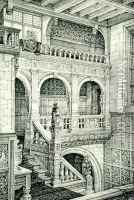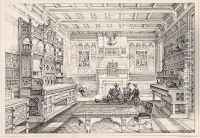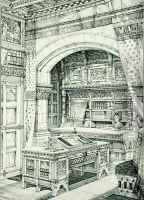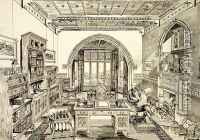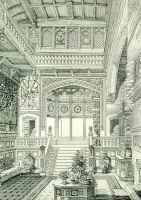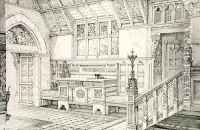Bruce James Talbert Paintings
Bruce James Talbert was a British architect and designer, born in 1838 in Dundee, Scotland. Talbert is particularly noted for his significant contributions to the Gothic Revival style in architecture and design during the Victorian era. His designs were not limited to buildings; he was also influential in the fields of furniture design and interior decoration.
Talbert's early career began as an apprentice to a local architect in Dundee. His talent was evident from the start, and he quickly moved to London to further his career. In the capital, he worked for several architectural firms, where he honed his skills and began to develop his unique style.
By the 1860s, Talbert had established himself as a proponent of the Gothic Revival movement, which sought to revive medieval Gothic architectural principles. He authored a highly influential book titled 'Gothic Forms Applied to Furniture, Metal Work and Decoration for Domestic Purposes,' published in 1867. This publication had a significant impact on the design of furniture and interiors, advocating for the integration of beauty and utility in everyday objects, which resonated with the Arts and Crafts movement that emerged later.
Aside from his written work, Talbert's legacy includes a variety of designs ranging from ecclesiastical furnishings to domestic furniture. His pieces are characterized by their intricate carvings, tall and slender proportions, and use of medieval and geometric patterns. Talbert's work was exhibited at international expositions, and his designs were produced by prominent manufacturers, including Gillow and Co. and Holland & Sons.
Despite his success as a designer, Talbert's architectural career was more modest. He did not receive many commissions for buildings, but he is credited with the design of several churches and small-scale architectural projects. His attention to detail and adherence to Gothic principles were evident in these structures as well.
Bruce James Talbert's career was cut short by his untimely death in 1881 at the age of 43. However, his influence on Victorian design and the Gothic Revival movement has been long-lasting. Today, his work is recognized for its innovation and contribution to the evolution of design aesthetics in the late 19th century.
